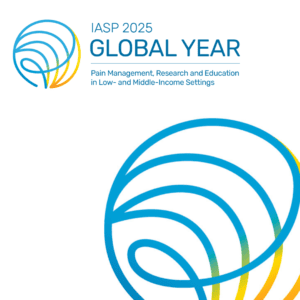- Membership
- Publications
- Resources
- Education
- Events
- Outreach
- Global Year
- Pain Management, Research and Education in Low- and Middle-Income Settings
- Sex and Gender Disparities in Pain
- Integrative Pain Care
- Translating Pain Knowledge to Practice
- Back Pain
- Prevention of Pain
- Pain in the Most Vulnerable
- Pain Education
- Joint Pain
- Pain After Surgery
- Global Year Campaign Archives
- My Letter to Pain
- IASP Statements
- ICD-11 Pain Classification
- Global Alliance of Partners for Pain Advocacy (GAPPA)
- National, Regional, and Global Pain Initiatives
- International Pain Summit
- Pain Awareness Month
- Global Year
- Careers
- About
- For Pain Patients and Professionals
Skip to content
Papers of the Week
Topically injected adrenocorticotropic hormone induces mechanical hypersensitivity on a full-thickness cutaneous wound model in rats.
Abstract
Cutaneous wound pain causes physical and psychological stress for patients with wounds. Previous studies reported that stress induces hyperalgesia and deteriorates wound healing. However, the effect of the stress response such as in hypothalamic-pituitary-adrenal (HPA) axis, on local wound area is unclear. We aimed to investigate the effects of a stress response on the mechanical withdrawal threshold in the local wound area and describe the identification of a wound pain exacerbation. We topically injected adrenocorticotropic hormone (ACTH) into the granulation tissue of full-thickness cutaneous wound model rats on the fifth day post wounding, and measured the mechanical withdrawal thresholds, cytochrome P450 2Bs levels, and concentration of 5,6-epoxyeicosatrienoic acid in wound exudate. We found that ACTH induced mechanical hypersensitivity at 4 and 6 hours after injection (P = 0.004 and 0.021, respectively), and increased gene expression of cytochrome P450 2B12 expression (P = 0.046). Concentration of 5,6-EET in the wound exudate was moderately correlated with the mechanical withdrawal threshold (r = -0.630). Finally, the mechanical withdrawal threshold in the 5,6-EET group was significantly lower than that in the control group at 2 hours after the injection (P = 0.015). We propose that 5,6-EET is one of the most promising contributors of the wound pain exacerbation. These findings could guide clinical wound and pain management. This article is protected by copyright. All rights reserved.

